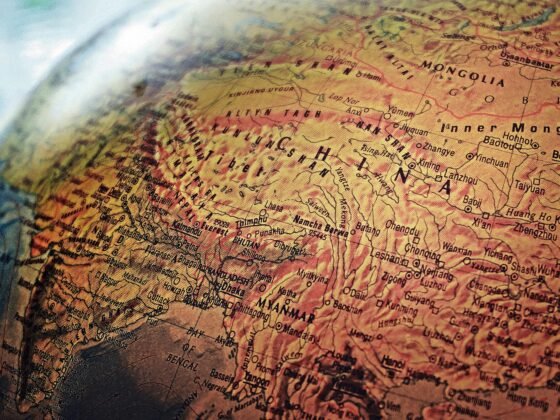The city of London is packed with museums, parks and galleries and all the places listed here are completely free to visit! All you need is a comfortable pair of shoes to explore the city; no wallet required!
Tate Britain, SW1P, South London
At this famous museum located on Millbank you can see notable British art from the Reformation period of 1500 to the present day. Among the works in its collection are Sir John Everett Millais’s painting which shows the Shakespearean heroine drowning; Picasso’s Weeping Woman; and Andy Warhol’s multiple photo of Marilyn Monroe. The Tate Britain opened in 1897 and forms part of the world-renowned Tate gallery collection (along with the Tate Modern (see above), Tate Liverpool and the Tate St Ives). There is free entry at the Tate Britain except for special exhibitions and is open 7 days a week and until 10pm on Fridays.
Tate Modern, SE1, South London
The Tate Modern on the other hand, is devoted exclusively to the international modern and contemporary artwork of the past century. On display here are works by Damien Hirst—who has never been the subject of a major display before—as well as an exhibition of Edvard Munch. Also running this year is The Tanks; Art in Action with a live programme of events. A new building is also being added, with a curious shape. The Tate Modern is also open 7 days a week until 10pm on Fridays and Saturdays, with free entry.
The Museum of London, EC2Y, City
At the Museum of London you can see the history of both the city and the site where it now stands, from prehistoric times to the present day. Archaeological objects on display include rare Viking coins, beads from a Saxon grave, and the Roman marble head of Mithras. The Museum of London forms part of the Barbican complex, it opened in 1976 and today offers free entry 7 days a week from 10am to 6pm.
The Changing of the Guard, Buckingham Palace, SW1A, Westminster
You simply cannot visit London and not watch the world famous Changing of the Guard, which is performed in a series of precisely choreographed movements involving soldiers on foot and on horseback, accompanied by distinctly British marching band music. It takes place every day from May to July, and every other day during the rest of the year. 2012 is especially notable due to the Queens Jubilee anniversary year.
The Victoria & Albert Museum, SW7, West London
The V&A is the largest museum in the world and is home to examples of artworks extending over a period of three millennia and gathered from around the world—India (a tea set made in the 1880s by Court Silversmith Oomersi Mawji, showing his characteristic animal and plant designs and bearing his stamp); Japan (a lacquer panel made around 1640 for export to Europe that closely resembles the contemporary Mazarin chest); the Islamic Middle East (the Arbadil carpet, made in the mid- 1500s for the shrine of Shaykh Safi ad-Din Ardabili in the city of the same name in northwestern Iran, famous for the beauty of its colorful design); and numerous prints, works of glass and ceramics, and examples of fashion from the past. In fact there are over 4.5 million art objects at the V&A with special exhibitions all year round, currently including British Ballgowns since the 1950s and British Design and Innovation from 1948 to 2012. Free entry is offered seven days a week with the museum open until 8pm on Fridays.
The London Olympics kick off in just 10 days now and as part of our focus on London (and indeed the UK as a whole) we have also blogged about the 10 must-see London attractions, 10 best shopping locations in London and 10 Cultural things to do in London. Enjoy!
Southbank Centre, SE1, South London
The Southbank Center, so called because of its location on the South Bank of the Thames, is the biggest artistic center in Europe. Hundreds of paid performances, both musical and theatrical, take place here, and there is also an education program. The center was built only in 1951, and there is talk of linking two of the buildings. The centre regularly hosts free events, exhibitions and performances with live music on Friday evenings and lunchtimes. Current free events include an exhibition by Korean artist Kim Beom, music from the British cellist Natalie Clein and visitors are invited to sing and play along to Billy Bragg’s Big Busk. Check the website for the latest events, times and details.
The British Film Institute’s Mediatheque, W1T, South London
This is another artistic venue. Hidden beneath the Waterloo Bridge (a major tourist attraction in its own right), the Mediatheque was created in 2007, giving the public access to many National Film & TV Archive treasures that had previously been inaccessible. The BFI are talking of opening similar places all over the country with the second Mediatheque already open in Derby.
The Bank of England Museum, EC2R, City of London
One of the most prominent banks in Europe for many years, the Bank of England operates a free museum where one may see displayed various historic banknotes and a coin issued in 1694, the year the bank was first founded; books and documents dating from the same period; decorative furniture (a globe, a set of chairs designed for the governor’s room, and the Great Iron Chest); artifacts made of silver; statues of people who played a role in the bank’s history; and miscellaneous objects, including an old typewriter. The museum is open Monday to Friday only from 10am to 5pm, except for special events.
The Natural History Museum, SW7, West London
The NHM in South Kensington has collections divided into five categories (zoology, entomology, botany, palaeontology and mineralogy). Dinosaur skeletons, the first live giant squid (not on general display; the animal has been preserved in a tank in saline solution) captured by fishermen, and many specimens collected by Darwin on his expeditions around the world are all housed here. There is a library, too, but you must make an appointment to be admitted. Entry is free of charge, although special exhibitions will be payable, seven days a week until 5.50pm.
Serpentine Gallery, W2, West London
Situated in Hyde Park and founded in 1970, the Serpentine Gallery is dedicated to both contemporary and modern art from the past century. Every summer, a pavilion by some prominent architect is commissioned by the gallery. In 2002, for instance, a pavilion by the Japanese architect Toyo Ito featured white geometrically- shaped sections. And in 2006 a contemporary Chinese art gallery was opened in the museum. This summer legendary icon Yoko Ono hosts her exhibition, ‘To The Light’ and The Serpentine Gallery Pavilion is now open for 2012, which is designed by the team that built the Beijing National Stadium for the last Olympics; Herzog and de Meuron and Ai Weiwei.












